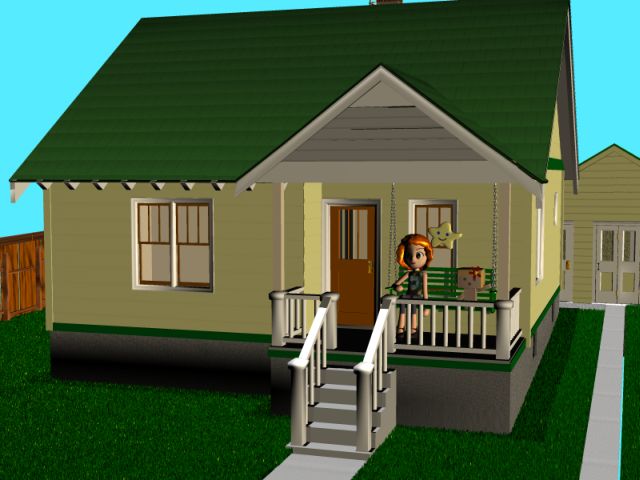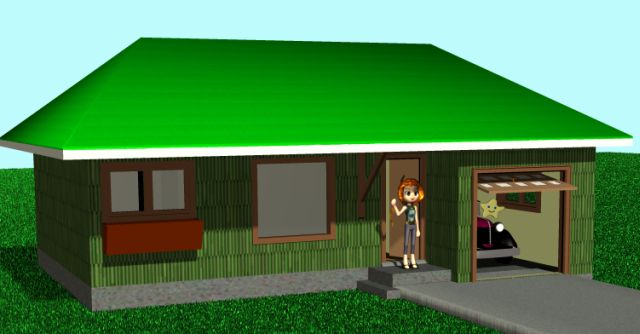Sunday, August 02, 2015
Good presentation, bad presentation
Polistra has been impressed positively and negatively by two presentations of more or less scientific material, both strongly localist.
= = = = =
(1) Good presentation: Here. An article on how bees vaccinate their babies. Bees obviously don't have breast milk, but they somehow manage to pass on locally acquired immunities to their kids.
How they do it: The workers digest pollen and nectar into honey, which they then, um, spit out to feed the queen and the babies. The honey contains broken-up and thus deactivated bacteria that were present on the nearby plants. The queen eats the deactivated bacteria in the honey, and those pieces are picked up by special protein units in her blood. When she produces an egg, those protein units get into the egg and carry the bacteria 'signals'. Each baby then develops immunity to the bacteria.
Fairly complex, but the accompanying picture makes it BEAUTIFULLY clear. I wouldn't have understood it from the text. Prize-winning graphics. I won't copy it out of respect, but you really should look at the original!
= = = = =
(2) Bad presentation: The public radio program 'Innovation Hub' interviewed an architect who was making an important point. Unfortunately he messed up the point by missing every opportunity to connect with reality. He was talking about the tendency in modern architecture to ignore experiential learning. Instead of obeying the experimental record of people who have been living in a location for a long time, architects zoom into town, create a horrible monstrosity that requires monstrous amounts of energy, then zoom out with a billion-dollar paycheck.
Excellent point. But he illustrated it with some weird stuff about Macccccchuuuu Picccccccchhhhuuu in Peruuuu, which apparently has a suspension bridge made of grass. And of course he chanted the required magic incantation CLIMATE CHANGE CLIMATE CHANGE CLIMATE CHANGE at least 300 times.
Huh? Grass bridge? How does that inform and instruct an architect in Spokane or Tulsa?
Polistra wants to say just ONE WORD to this frustrating theoretician.
BUNGALOW.
 This is the American experimental record, and it WORKS if built with proper attention to sun and orientation. [ie Porch faces south.] Overhang keeps the walls cool in summer, high ceilings keep the heat above your head. Bungalows last a long time, partly because the same overhang also protects the foundation from water and termites.
Presumably Mister Maccchuuu couldn't say the word BUNGALOW because Bungalows were largely built and occupied by unspeakable unthinkable unnameable
This is the American experimental record, and it WORKS if built with proper attention to sun and orientation. [ie Porch faces south.] Overhang keeps the walls cool in summer, high ceilings keep the heat above your head. Bungalows last a long time, partly because the same overhang also protects the foundation from water and termites.
Presumably Mister Maccchuuu couldn't say the word BUNGALOW because Bungalows were largely built and occupied by unspeakable unthinkable unnameable
 He can think of the grass bridge because it was built by those delicate vulnerable endangered nonviolent zenlike Aztecs when they weren't busy tossing virgins in the volcano. That's COOOL. Killing innocents is always COOOOOL. Death wins the MacArthur Prize.
= = = = =
Addendum: Bungalows are optimal for hot places with little snow. For snowy places, a hip roof with deep overhangs on all sides is preferable.
He can think of the grass bridge because it was built by those delicate vulnerable endangered nonviolent zenlike Aztecs when they weren't busy tossing virgins in the volcano. That's COOOL. Killing innocents is always COOOOOL. Death wins the MacArthur Prize.
= = = = =
Addendum: Bungalows are optimal for hot places with little snow. For snowy places, a hip roof with deep overhangs on all sides is preferable.
 Lots of soffits around the bottom, lots of vents on top. Result: Roof stays as cool as possible, and has a UNIFORM temperature from top to bottom. Very low chance of ice dams. The exposed overhang on bungalows pretty much guarantees ice dams. In all seasons hip is better than gable because hip causes water to spread out while it flows downward. Flow distributes evenly on all sides. About 40% of the houses in this neighborhood have wide hips like this. I don't know if they were intended to be platonic houses, but that's exactly what they are! (Wish I could afford one. Maybe later.)
= = = = =
Addendum next day: Now HERE is a combination of both subjects above. A single wonderfully explanatory picture that covers the development of American vernacular architecture. NEAT! I love it!
= = = = =
Much later update about the hip-roof theory: I WAS DEAD WRONG. It sounds good, but houses built on that design are ACTUALLY the worst ice-dammers. More here. Thus proving yet again that you should go with EXPERIENCE, NOT THEORY.
Lots of soffits around the bottom, lots of vents on top. Result: Roof stays as cool as possible, and has a UNIFORM temperature from top to bottom. Very low chance of ice dams. The exposed overhang on bungalows pretty much guarantees ice dams. In all seasons hip is better than gable because hip causes water to spread out while it flows downward. Flow distributes evenly on all sides. About 40% of the houses in this neighborhood have wide hips like this. I don't know if they were intended to be platonic houses, but that's exactly what they are! (Wish I could afford one. Maybe later.)
= = = = =
Addendum next day: Now HERE is a combination of both subjects above. A single wonderfully explanatory picture that covers the development of American vernacular architecture. NEAT! I love it!
= = = = =
Much later update about the hip-roof theory: I WAS DEAD WRONG. It sounds good, but houses built on that design are ACTUALLY the worst ice-dammers. More here. Thus proving yet again that you should go with EXPERIENCE, NOT THEORY.
 This is the American experimental record, and it WORKS if built with proper attention to sun and orientation. [ie Porch faces south.] Overhang keeps the walls cool in summer, high ceilings keep the heat above your head. Bungalows last a long time, partly because the same overhang also protects the foundation from water and termites.
Presumably Mister Maccchuuu couldn't say the word BUNGALOW because Bungalows were largely built and occupied by unspeakable unthinkable unnameable
This is the American experimental record, and it WORKS if built with proper attention to sun and orientation. [ie Porch faces south.] Overhang keeps the walls cool in summer, high ceilings keep the heat above your head. Bungalows last a long time, partly because the same overhang also protects the foundation from water and termites.
Presumably Mister Maccchuuu couldn't say the word BUNGALOW because Bungalows were largely built and occupied by unspeakable unthinkable unnameable
 He can think of the grass bridge because it was built by those delicate vulnerable endangered nonviolent zenlike Aztecs when they weren't busy tossing virgins in the volcano. That's COOOL. Killing innocents is always COOOOOL. Death wins the MacArthur Prize.
= = = = =
Addendum: Bungalows are optimal for hot places with little snow. For snowy places, a hip roof with deep overhangs on all sides is preferable.
He can think of the grass bridge because it was built by those delicate vulnerable endangered nonviolent zenlike Aztecs when they weren't busy tossing virgins in the volcano. That's COOOL. Killing innocents is always COOOOOL. Death wins the MacArthur Prize.
= = = = =
Addendum: Bungalows are optimal for hot places with little snow. For snowy places, a hip roof with deep overhangs on all sides is preferable.
 Lots of soffits around the bottom, lots of vents on top. Result: Roof stays as cool as possible, and has a UNIFORM temperature from top to bottom. Very low chance of ice dams. The exposed overhang on bungalows pretty much guarantees ice dams. In all seasons hip is better than gable because hip causes water to spread out while it flows downward. Flow distributes evenly on all sides. About 40% of the houses in this neighborhood have wide hips like this. I don't know if they were intended to be platonic houses, but that's exactly what they are! (Wish I could afford one. Maybe later.)
= = = = =
Addendum next day: Now HERE is a combination of both subjects above. A single wonderfully explanatory picture that covers the development of American vernacular architecture. NEAT! I love it!
= = = = =
Much later update about the hip-roof theory: I WAS DEAD WRONG. It sounds good, but houses built on that design are ACTUALLY the worst ice-dammers. More here. Thus proving yet again that you should go with EXPERIENCE, NOT THEORY.
Lots of soffits around the bottom, lots of vents on top. Result: Roof stays as cool as possible, and has a UNIFORM temperature from top to bottom. Very low chance of ice dams. The exposed overhang on bungalows pretty much guarantees ice dams. In all seasons hip is better than gable because hip causes water to spread out while it flows downward. Flow distributes evenly on all sides. About 40% of the houses in this neighborhood have wide hips like this. I don't know if they were intended to be platonic houses, but that's exactly what they are! (Wish I could afford one. Maybe later.)
= = = = =
Addendum next day: Now HERE is a combination of both subjects above. A single wonderfully explanatory picture that covers the development of American vernacular architecture. NEAT! I love it!
= = = = =
Much later update about the hip-roof theory: I WAS DEAD WRONG. It sounds good, but houses built on that design are ACTUALLY the worst ice-dammers. More here. Thus proving yet again that you should go with EXPERIENCE, NOT THEORY.Labels: Experiential education, Grand Blueprint, Heimatkunde, infill, Shack people - Cottage people
